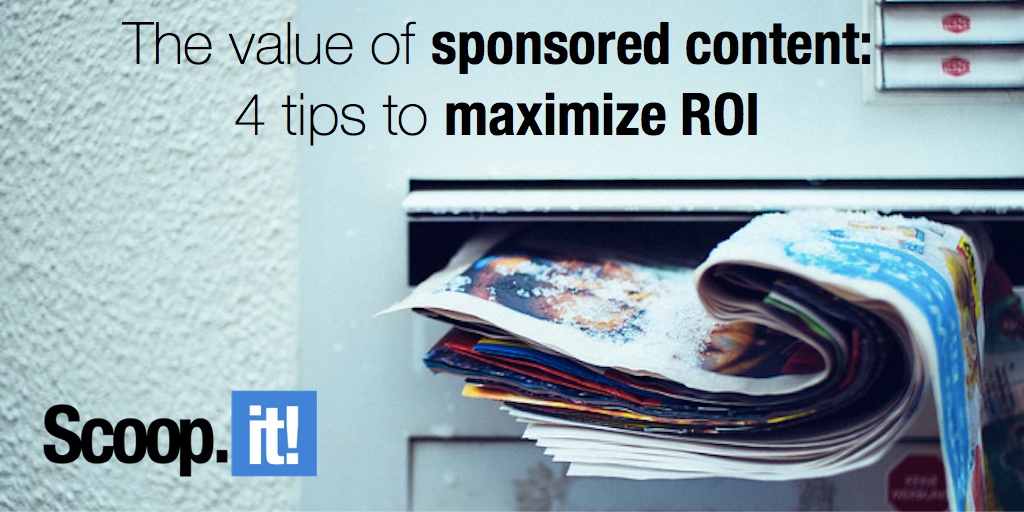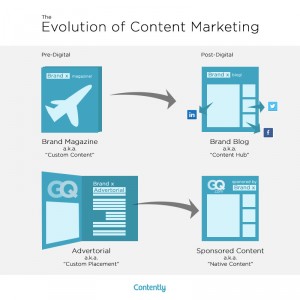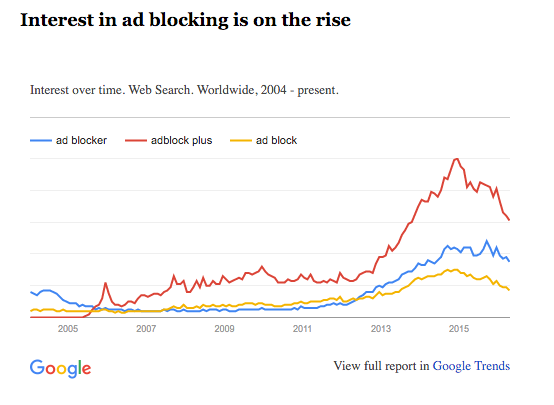
As Internet users become ever savvier, businesses are having to find more natural ways to advertise and market their value offerings. One of the best ways to do this is by sponsoring content.
If you’re going to spend money on sponsored content, however, you need to ensure you’re getting the most out of it.
Consumer trends show content remains king
Since the Web has become an integral part of our everyday lives, users tend to expect more from it every year. We all want an Internet experience that’s easy to use, tailored to our preferences, and largely unimpeded by annoyances and distractions.
If you want to understand precisely how web user preferences have changed over time, study various Internet advertisements as they have evolved. In the early days of the web — that is to say, in the late 1990s and the early 2000s — ads were everywhere. If you clicked on a site, it wasn’t unusual to see banner ads at the top of the page, small flashing ads in the sidebars, lower-quality ads at the bottom of the page, ads integrated into the content, and so on.

If you recall surfing the interwebs during its infancy, you probably also remember those tremendously audacious pop-up ads. The ones that would open entirely new browser windows and encourage you to click. Companies devised tools to cut down on pop-up ads, but none of them did the job completely.
Rise of ad blocking
For the greater part of these early years, users endured this advertisement-saturated Internet experience. Perhaps it was because users were already conditioned to advertisements on television, in newspapers, and on the radio. At the time, the Internet was viewed as just another media source. Over time, however, users became more savvy, and began to realize that the Internet is much different from those other sources, or at least had the potential to be. The Web can and should be tailored and personalized to the needs of the user.
Users started turning firmly away from obnoxious paid advertising; they chose to block ads and refused to click them. In 2015, global ad blocking grew by 41%. In the United States alone, it grew by 48%. Last year, these 198 million active ad blockers were estimated to cost publishers a whopping $22 billion.
And as Katherine McDermott, brand manager at Revcontent, points out, “86% of consumers suffer from banner blindness, meaning they can’t recall the last display ad they saw.”
Let’s be honest, though: Marketing and advertising will always have a role to play on the Internet. At the same time, it’s clear that we’ve moved beyond overt and blatant promotion. Users are fine with advertising, but they want more of it on their terms. They prefer it to be natural, familiar, and convenient. And this is where sponsored content comes into play.
What is sponsored content?
Sponsored content is the advertising industry’s response to the widespread distaste for banner ads and related tactics. According to the Content Strategist, Sponsored content is essentially material that’s posted on a website and paid for by an advertising partner who’s not affiliated with the website.
The content is disclosed as sponsored, but is otherwise indistinguishable from the other, unpaid content. The value of sponsored content lies in its ability to reach users. According to a recent HubSpot survey, 72.8% of Internet users who have been exposed to sponsored content believe it has an equal or greater value compared to other unpaid/non-sponsored content on the same website. What does this imply? Your audience wants great content, they don’t care where it comes from.
4 tips for making sponsored content worth your time
If you want to enjoy high returns for your advertising, then you need to focus on content. There are multiple high-returning content strategies, but we’ll focus on sponsored content in this post. Here are 4 best practices for using sponsored content to maximize ROI:
1. Do more than promote
When it comes to sponsored content, you must do more than merely promote. If your content reads like one big advertisement, then you’ve missed the point. Use the first few paragraphs to build excitement and engage the user without any biases or sales language. Build trust in the beginning, then you can leverage it to push the message you want to convey gently, in the middle or at the end.
2. Choose the right platforms
Platform selection is almost as important as topic selection. You need to choose publishing partners that align with your target market; otherwise, you’re wasting your time.
“When they come across it, the consumer brand should be such a good fit for the publisher’s audience that they will accept it without question,” writes marketer Aime Reardon. “For example, readers of Parents.com wouldn’t be surprised to see sponsored content from a diaper brand, but content from an outdoor apparel brand may be confusing.”
3. Perform adequate research
In order to choose the right platforms, you need to have a comprehensive understanding of who your target readers are and which sites they’re visiting. If you don’t already have reader personas, now is the perfect time to develop them.
In some cases, they’re identical to your brand’s buyer personas, but they could differ slightly. Spend some time to grasp which of your customers are interacting with your content and then hone in on publishing platforms that interact with those people. You can use tools like Scoop.it to help discover and aggregate all the content being published in your niche to learn more about who your audience is and what their biggest challenges are. A great way to familiarize yourself with your online users without paying for research is to study social media followers.
4. Disclose properly and naturally
In order for sponsored content to be legal and ethical, you must disclose that your content is in fact sponsored. This doesn’t mean you have to slap on a big blinking neon sign that reads, “I paid for this!”, however. It’s better to go with a subtle indicator, such as a button by the byline or a discreet disclosure at the bottom. Your truthfulness will pay off in the long run. For great examples of sponsored content, check out The New York Times and Forbes’ Brand Voice.
Right place, right time
Ultimately, sponsored content is all about relevancy. You want to be in the right place at the right time. If you follow these tips and best practices, you shouldn’t have much trouble garnering lucrative results from your investment.
Conclusion
There’s no denying that sponsored content has been gaining momentum as content marketing continues to dominate the digital marketing landscape. Yet many brands and publishers still need to recognize its value and jump on board the sponsored content train. Keep these best practices in mind and always be willing to adapt your strategy to the changing needs and demands of the target user.
If you want to get 30 effective techniques to master content marketing along with valuable insights from 10+ influencers like Mark Schaefer, Rebecca Lieb, Lee Odden, Jason Miller or Ian Cleary, download our free eBook now!
Image by Honey Huckabee



